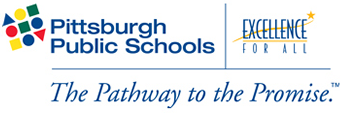
Moving Past Old Battles Over Health Benefits, Pittsburgh's Kids Have $2 Billion Advantage Over Philly Kids
At long last, forward-looking teacher union and school leaders recognize they share the same goals and are proving that it’s not that difficult to slay the healthcare cost beast even in an expensive and contentious healthcare market. Philadelphia represents the model that is destroying education budgets while Pittsburgh represents the antidote to that poisonous approach. In fairness, Philadelphia is like virtually every community in the country where teacher unions are on the wrong side of the negotiating table. Bill Gates devoted an entire TED talk on how healthcare is devastating education when left unchecked. Clearly, teacher unions want to ensure their members get fairly compensated and schools aren’t further decimated by healthcare’s hyperinflation. The math simply doesn't work unless you take an approach similar to Pittsburgh.
Redistribution “Tax” Steals from Kids
Assuming the current trend continues, it means that the kindergartners entering the Allegheny County schools in the Pittsburgh area will collectively have $2 billion more available to their community to invest in education and services over the course of their school years. This is in stark contrast to how healthcare’s hyperinflation “tax” has redistributed money from education and middle class incomes to healthcare’s prolificacy. Ideally, the leaders in Allegheny County will follow the lead of the citizen in Orlando that reinvested money that would have otherwise been squandered on healthcare. In the process, he not only improved the health of his company and employees by saving 50% per capita on health benefits, they adopted a nearby neighborhood that was previously crime-ridden.
The investment over 20 years in daycare, pre-K, after-school programs and college tuition ($11 million) was just over what they save every year compared to similar sized companies and is less than 5% of what they saved compared to similar organizations. The results were breathtaking:
- Employees had their college education and their kids’ college education paid for (after a few years of service)
- Despite having 56% of their pregnancies classified as high risk, a proactive prenatal care program ensures that the health of the mother and baby are preserved by avoiding premature births and complications
- Employee retention is six times better than the industry average
- Crime rates in the adopted neighborhood decreased by 67%
- High school graduation rates more than doubled from 45% to nearly 100%
- So far, 450 (and counting) college educations have been paid for in the adopted community
I spoke with Jan Klein, who leads the Allegheny County Schools Health Insurance Consortium, about their efforts. Klein explained how they are just getting started but they are light years ahead of most schools. Their approach is very consistent with the Health Rosetta blueprint for purchasing healthcare services wisely. They recognized that the status quo of health benefits is miserable. In a nutshell, they make wise healthcare decisions free or nearly free (e.g., primary care is free and going to high-quality providers has very low or no co-pays or deductible) and poor decisions are expensive. It’s much more subtle than counter-productive, blunt-instrument high-deductible plans that often lead to deferring care. The most innovative benefits advisors know that thoughtful plan design creates a win for all parties (e.g., high deductibles make sense for poor decisions).
Originally the situation in Allegheny County was like the rest of the country where the teacher unions and school leaders were adversaries:
Hardly a day goes by without hearing about a threatened or actual teacher strike. Inevitably, a primary point of contention is health benefits. Collectively, the teacher unions and school boards are sticking a few more fingers in the dike. If they popped their heads above the dike, they would realize that a healthcare tsunami is headed their way. In the meantime, high quality schools and programs are being washed away. The collateral damage ranges from fewer arts programs to larger class sizes to reduced compensation for teachers. None of these casualties are good for kids or the nation’s future.
Klein described how union and school leaders finally recognized they have shared goals. For example, if healthcare isn’t affordable, schools can’t provide salaries they would like to offer and teachers deserve. The consortium is now jointly managed with equal representation from both labor and management. When they have consultants join their meetings, they can’t tell who is labor versus versus who is management. Many times, it’s the union leaders (Dave Wyatt leads the labor side of the equation) who are more aggressive on pushing forward new initiatives.
Klein pointed out that the most important thing is you have to teach people how to get value. The math is simple:
- You can’t make wise decisions without transparency. Transparent medical markets ensure a fair deal for the provider, employer and employee. It adds up very clearly for the employer: If they get a fair price from a high-quality provider, they’ll gladly waive co-pays and deductible as this brief video from one of the transparent medical market service providers describes.
- With proper value-based primary care, an ounce of prevention is worth a pound of cure. This is a stark contrast with the unfortunate reality where primary care has been turned into milk-in the-back-of-the-store, designed to push people toward high-margin (and often unnecessary) services. Having studied both value- and volume-based primary care, it’s apparent that the volume-based practices effectively ration choices and quickly steer patients to overtreatment in the form of tests and procedures. After all, there isn’t a radiologist in the world who believes Americans should be receiving nearly 100 million CT scans every year. When there is a proper primary care relationship, they lay out all of the options available to a patient. For example, when an individual is educated that approximately 90% of spinal procedures could be more effectively addressed by a different modality such as physical therapy, they almost always choose the less invasive option. A good price on an unnecessary procedure is still a bad deal.
- In Philadelphia, schools pay $8,815 cost per member for health benefits. In Allegheny County, the consortium has 48,000 members and pays $4,661 per member. In the Allegheny consortium, if they paid like Philadelphia, they’d be spending $199 million more every year. Over the course of a child’s K-12 education in Pittsburgh, that would add up to well over $2 billion that is available to a higher and better use.
The more one studies the collateral damage from healthcare’s under-performance, the clearer it becomes that the healthcare status quo is the single greatest immediate threat to America. Without a doubt, the biggest underlying driver of the most interesting presidential election in my lifetime is the fact that healthcare has created an economic depression for the middle class.
The threat from healthcare is why an Oscar nominee and Peabody-winning filmmaking team are highlighting the inconvenient truth that there are two health systems in this country in an upcoming satirical film called that I'm producing called The Big Heist. Healthcare 1.0 & 2.0 has created a disaster that must be replaced. The better system is one that wildly out-performs the status quo on Quadruple Aim objectives but is available to only a small number of people—not because it’s more expensive but because it’s less expensive. The “preservatives” hellbent on preserving the status quo do their best to obfuscate this reality. The irony is there are low-income individuals paying for healthcare out of their own pocket (they aren’t eligible for Medicaid) that is superior to what 99% of Americans are getting—rich or poor. It only takes will on the part of employers to make this happen. Thankfully, innovative benefits advisors are guiding their clients to do this at increasing rates. Those benefits brokers who remain laggards will go the way of stock brokers.
Fortunately, there are employers, school districts, unions and many others who are taking advantage of the open source Health Rosetta blueprint. I’m regularly asked to speak about how to thwart the heist at customer events for TPAs and benefits consultants, business coalitions, non-profit associations and public sector organizations. When I shared the sentiment I’m observing at these events with an executive producer of the documentary, he sent me a link to one of the most famous scenes in a movie. You might say they are mad at health and aren’t going to take it anymore.
Though their counterparts in Philly may tout their brotherly love, the education leaders in Pittsburgh are proving their love of serving kids led them to move past tired, old assumptions of labor and management being at odds. It’s clear that when teacher unions and school boards exhibit leadership and vision, they can slay the healthcare cost beast that has ripped to shreds education budgets throughout the country. Their leadership stands in stark contrast to the ongoing childish behavior of the two behemoths in Pittsburgh who demonstrate their selfish interests are more important than the community’s well-being. Fortunately, the Pittsburgh-area school leaders’ steely resolve in the face of local challenges should inspire school boards and teacher unions throughout the country.
Subscribe to The Future Health Ecosystem Today to stay ahead of healthcare changes. Follow Dave Chase on Twitter
